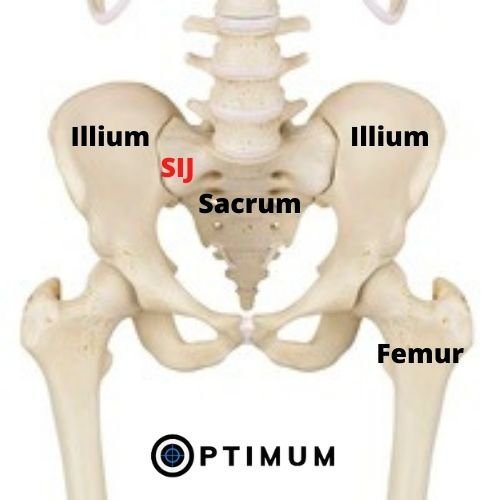THE CAUSES OF ANTERIOR AND POSTERIOR PELVIC TILT
The pelvis is often misunderstood and when painful something we often hear at Optimum Derby is “out of align”, “I need to see my chiropractor to have my pelvis put back”.
If your pelvis falls that far out then you definitely need to be seeing the local A and E rather than a chiropractor, however this blog should hopefully explain the anatomy of the pelvis and the way it moves and rotates through movements.
The pelvis is built of 3 main bones, 2 illium bones and the sacrum. The illium are often described as the wings or the crest of the pelvis and the sacrum sits between the two illium at the back forming the sacro-illium joint (SIJ). The SIJ is another point of a lot of complaints but we can discuss that in detail another time. The illium do touch and connect at the front, and they do move independently of one another like a see saw, as one side goes forwards the other goes back and vice versa.
To understand how the pelvis moves we need to understand the ACTIVE structures which connect to it. The PASSIVE structures are the ligaments anteriorly and posteriorly and today we are not going to focus on these PASSIVE structures so much. The ACTIVE structures (muscles) connect bone to bone and apply forces to the pelvis in 4 simple ways;
1. Attach to the front of the pelvis and pull down towards the knee
2. Attach to the front of the pelvis and pull towards the rib cage
3. Attach at the back of the pelvis and pull towards the rib cage
4. Attach at the back of the pelvis and pull towards the knee.
These movements can happen on the left hand side of the pelvis and the right hand side independently of one another as we walk and move, but sometimes the balance between these pulling motions on the front and back of the pelvis can be imbalanced and cause anterior and posterior pelvic tilt at rest or in normal walks of life and this often when we see issues occur.
At Optimum Derby we find these imbalances are the cause of a lot of lower back pain, pelvic pain, sciatica and even knee and shoulder complaints.
If you feel you may be struggling with these imbalances and need a full assessment feel free to book online, email or call to find the route of your problem.


